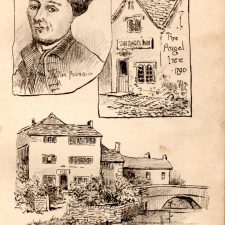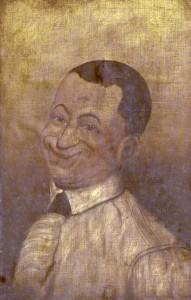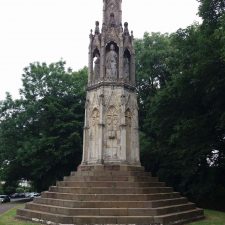A Short History Of Tim Bobbin Lancashire Author, Poet & Artist


Self portrait of John Collier (Tim Bobbin)
As a Mancuniun, I came to Rochdale some thirty odd years ago, knowing nothing of this northern textile town. Coming from the big city I inevitably felt I was moving into the back of beyond, until my wife took me in charge and began my re-education.
She began by taking me to the parish churchyard to see the grave of Tim Bobbin’.
“Tim who?” I said.
“You’ll see!” said she, and we did.
As we stood there in the sunshine at the eastern end of the lovely grey church, beside the great slab of granite lying on top of poor Tim and his wife, I peered through the wrought iron railings protecting the grave from vandals to read the epitaph reputed to have been written by the incumbent just twenty minutes before his decease and decided that I had to find out more.
” Here lies John and with him Mary,
Cheek by jowl and never vary,
No wonder they so well agree,
John wants no punch, and Moll no tea.”



 LONGDENDALE has always been noted for the number of its inhabitants devoted to the study of magic arts. Once upon a time, or to give it in the words of an unpublished rhyme (which are quite as indefinite)—
LONGDENDALE has always been noted for the number of its inhabitants devoted to the study of magic arts. Once upon a time, or to give it in the words of an unpublished rhyme (which are quite as indefinite)—




















